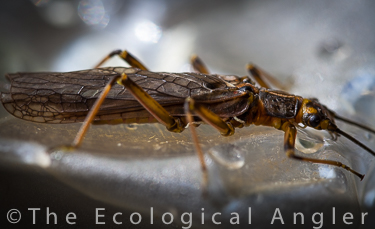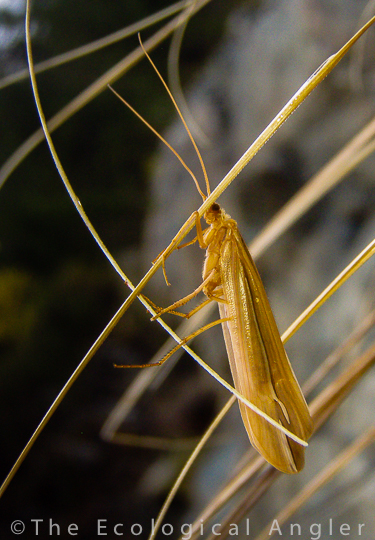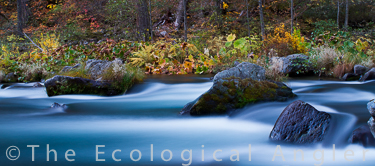Sierra Nevada Locals
Pay close attention to these groups of insects when fly fishing in the Sierra Nevada.
Aquatic Insects of the Sierra Nevada
Endemic species of aquatic invertebrates in the Sierra Nevada (and in mountains in general) are often isolated at all elevations in small first- and second-order stream systems and can be limited in distribution to such habitats as springs, peatlands, and small headwater streams. Some groups of aquatic invertebrates including some families of stoneflies and caddisflies exhibit high species endemism (i.e., are found only in the Sierra Nevada) and great diversity in the Sierra Nevada (N. A. Erman 1996).

Fish assemblages are not indicators or surrogates for aquatic invertebrate communitites in much of the Sierra (i.e., healthy populations of trout does not imply healthy populations of aquatic insects). Aquatic systems differ widely throughout the Sierra because of such natural factors as elevation, climate patterns, geology, substrate type, water source, water volume, slope, exposure, and riparian vegetation. For these reasons it is not possible to describe a typical Sierran stream or lake, or a typical invertebrate assemblage (N. A. Erman 1996).

Invertebrate biomass in the water was highest during the high water period and lowest in the summer and fall. Aquatic insects are the largest component of the aquatic invertebrate community, and most of them emerge as terrestrial adults in summer and fall in the Sierra Nevada, with fewer species emerging in spring and a small minority in the winter. Thus, invertebrate biomass is low then the water is low because many insects are in the terrestrial stage or are in the egg or small larval stage (N. A. Erman 1996).
Natural Flows & Sediment
Invertebrates can accommodate the natural rise and fall of floodwater by moving up with the water and outside the stream banks, by burrowing into the substrate, or by taking refuge in root wads and debris along stream edges. They return to the stream channel as the water recedes. Natural floods perform the function of flushing sediment from the stream system, which, in turn, increases pore spaces within the steam-bottom substrate and provides surface area for invertebrates to inhabit. In contrast, year-round constant flow, a condition found in some artificially managed streams, is also abnormal to invertebrate communities of the Sierra Nevada. Under constant flow, sediment is not flushed from these streams, and other poorly understood triggers to life cycle changes and in-stream migrations my not be present (Reiser, et al. 1989).
In streams, sediment accumulation depletes available habitat for invertebrates, as pore spaces in the rocky substrate are filled with sand and silt. Over time, continued sedimetation can create a cemented stream bottom with no substrate pore spaces available for invertebrate colonization.
As sediment increases, species richness, density, and biomass decrease. Sediment obstructs respiration, interferes with feeding, causes loss of habitat and habitat stability, and may alter production of invertebrate food sources (Johnson et al 1993).

Tree & Wood Mass
Wood has been intentionally removed by state and federal agencies, including the California Conservation Corps, and my loggers and woodcutters. In addition, downed wood was retained more easily in meandering stream channels. Wood in streams serves several functions for invertebrates. It retains organic matter (leaves, sticks, and needles) that falls into the stream. It slows the water and creates pools, thereby allowing the opportunity for invertebrates to feed on organic matter, which increases the efficiency of nutrient use. Wood creates complexity of habitat by forming pools and breaking up otherwise long stream runs. And some invertebrates feed specifically on the wood or attach themselves to the wood and feed on the algae, microinvertebrates, and bacteria that grow on wood (Murphy and Meehan 1991).

